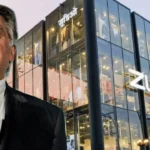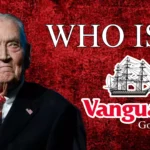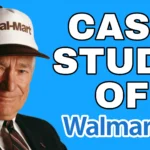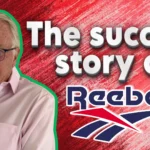Today, Tesla is known as the high-tech, all-electric car company that Elon Musk runs. It is considered one of the most innovative and controversial companies in the world, and whatever you think about it tends to hinge on how you feel about a single person: the South African billionaire entrepreneur Elon Musk. It’s interesting, you know, that the car company is called Tesla, and the reason it’s called Tesla is that we use an AC induction motor.

Table of Contents
The Vision and the Controversy of Tesla
Tesla’s bold mission combined with Musk’s extravagant personality has created a brand that attracts both loyal fans and angry critics. But did you know that Musk was not even one of the two founders of the company, or that both Tesla and Musk have faced numerous unprecedented lawsuits and complaints? Tesla’s impressive timeline will not only dazzle you but also serve as a source of inspiration.
The Early Days: Tesla Motors is Born
So keep reading until 2017. Tesla was originally called Tesla Motors. The company was founded in 2003 by engineers Martin Eberhard and Marc Tarpenning. They had a passion for electric cars and a mission: they wanted to prove that electric cars could be better, quicker, and more fun than gasoline cars, and they wanted to show people that they didn’t need to compromise when considering buying one.
The Name: Honoring an Electrifying Legacy
As you may already know, Tesla was named after Nikola Tesla, the 19th-century inventor who is best known for discovering the properties of rotating electromagnetic fields. But why did the company’s founders choose his name? Well, the choice seems pretty obvious. After all, Nikola Tesla was one of the major pioneers in electricity, and his work led him to what is known as alternating current, or AC, in the form of electrical transmission that is still used today in many things, including Tesla cars. In recent decades he has become a pop culture icon among engineers, but there was another reason why Eberhard chose the name. From the very start, he wanted to create a company that would alter the way we thought about electric vehicles forever. For months he had been thinking of a name, but nothing seemed to fit. He didn’t want anything that sounded too green, as that simply didn’t sound strong enough to him.
The Eureka Moment: A Flash of Inspiration
But then one day the idea struck him like a bolt of lightning while sitting down at the Blue Bayou restaurant at Disneyland – no better place than Disneyland to come up with great ideas. “Tesla is – was at least – one of the forgotten inventors. It would be a good tip of the hat to give him credit for his invention,” Eberhard rejoiced with his idea, and he turned to his girlfriend and said, “Why not name it in honor of Nikola Tesla? After all, he invented the AC induction motor and the name is easy to remember.” His girlfriend smiled and replied, “Perfect. Now get to work making her car.” And so on the 23rd of April 2003, Eberhard and Tarpenning officially registered the domain name [invalid URL removed]. They just needed to build some cars.
Enter Elon Musk: The Visionary Investor
Although Musk has long been the face of Tesla, you may be surprised to hear that he did not join the company until 2004. By that time, Musk had already made quite a name for himself. Despite having been fired from his CEO role at PayPal in 2000, he kept his equity in the company and became even richer than he already was when PayPal went public in 2002. The year after that, Musk founded a SpaceX company, and the next one he joined the Tesla table. He invested 6.3 million dollars into the company, and by doing so he became the chairman of its board of directors.
The Roadster: Tesla’s Electrifying Debut
From the very beginning, Eberhard and Tarpenning dreamed of building an entirely electric sports car, and finally, in 2006, they unveiled the prototype for their Tesla Roadster. Shortly after, Musk took to his company’s blog to write the secret Tesla Motors master plan. At the bottom of the post, he succinctly sums up the company’s strategy in just 32 words: “Build a sports car. Use that money to build an affordable car. Use that money to build an even more affordable car. While doing above, also provide zero-emission electric power generation options.” The ending of the message read: “Don’t tell anyone.” Big aspirations, but would they also be able to deliver?
Roadster Launch: Triumph and Challenges
After a few more years of development, the Roadster was finally launched. With it, Tesla achieved something that no company ever had: they had produced an entirely electric car with practical specifications that could meet consumer needs. It was an amazing achievement for such a young company, but there were also some downsides. At its release, the car was being sold for over a hundred thousand dollars, making it a clear luxury product that few could afford. But as we’ve seen earlier, this hefty price tag was all a part of the big master plan. Another issue was the charging time. The original Roadster required between 24 and 48 hours to recharge using a standard home outlet, which is of course way too long. Nonetheless, Tesla Motors was well on its way to disrupting the automotive industry.
Leadership Shake-Up: Musk Takes the Wheel
The unveiling of the Roadster wasn’t the only transformative change that was taking place, in 2007 and 2008 Tesla also made significant changes to its leadership team. In 2007, Eberhard resigned as CEO of Tesla but remained as a member of the company’s advisory board. He was succeeded first by Michael Marks and then by Ze’ev Drori. However, shortly before Tesla shipped its first automobile, the two founders left the company entirely. Not long after, Musk took over as CEO and fired 25% of the company’s staff. “You know he’s done some interesting things with Tesla for sure. I’m not sure why he has to also say that he was a founder when he wasn’t. I don’t understand.”
Legal Battles and Financial Woes
This change in leadership did not happen without controversy though, and in 2009 Eberhard and Tarpenning filed a lawsuit against Tesla and Musk. They accused Musk of libel and slander, feeling that he had been forced out of his own company. Eberhard alleged that he was unfairly blamed for the delays and subsequent financial problems associated with the Roadster. He also claimed Tesla purposely damaged his Tesla Roadster before delivering it to him. While Eberhard dropped the lawsuit later that same year, the company was still close to ruin.
On the Brink: A Financial Lifeline
Orders for the Roadster were coming in by the thousands, with some enthusiastic customers even willing to spend a little extra to jump to the front of the waiting list. Everything seemed rosy on the surface, but the company was in deep financial trouble. Despite launching the Roadster, Tesla was still strapped for cash. It had a mere 10 million dollars cash in hand, which was less than was needed to even deliver the cars it had already sold. What now?
Rescue and Resurgence: Daimler and the IPO
Luckily, not much later two big cash infusions came to Tesla’s rescue: one from Daimler AG and the other from the U.S. Department of Energy. Seeing a good business opportunity, Daimler bought a 10% stake in the company for 50 million dollars. This acquisition, with a subsequent 465 million dollar loan from the Department of Energy, gave Tesla the working capital it needed to survive, and its headquarters relocated to Palo Alto. However, as any successful person knows, merely living paycheck to paycheck, or in this case from loan to loan, is not feasible in the long run. So in 2010, Tesla found a more stable solution for its short-term capital concerns: it went public. This was a major event in the history of Tesla, and debuting on the NASDAQ at 17 dollars a share, it quickly raised 226 million dollars in its IPO.
The Model S: Tesla’s Entry into the Mainstream
The modern face of Tesla arguably began in 2011 when the company unveiled its prototype of its Model S sedan. At just over 75,000 dollars apiece, the car would be Tesla’s next step in the master plan to produce a cheaper alternative to the Roadster. Although it was still a luxury sedan, it was Tesla’s first step toward the mainstream consumer market and a first attempt at bringing down the cost of its products. Just like the Roadster before it, the Model S set new benchmarks for what an electric vehicle could achieve, and it was an event that would come to characterize the company for years to come.
Supercharging the Network: Expanding Accessibility
In 2012, Tesla opened its first freestanding charging stations called Superchargers. These locations offered free charging to Tesla owners, and it was also faster than using a common wall outlet. Initially, there were just six stations, and they were all located in California, but soon enough it expanded to a massive Supercharger network with over 1,000 stations worldwide.
Near-Death Experience: A Close Call for Tesla
Following the release of the Model S, Tesla’s stock entered a nosedive that threatened its existence, and a desperate Musk had already lined up a deal for Google to purchase the company for six billion dollars. But later that same year, Tesla’s sales started picking up, and he was able to back out of the deal. By 2014, the company began constructing its first Gigafactory. Here the batteries that power Tesla’s devices are made, as well as energy storage units for its solar business. It is considered crucial to the company’s entire business model, and today it is one of the biggest buildings in the entire world, at least by footprint area.
Beyond Cars: Tesla’s Diversification
Business was booming, and Tesla slowly began expanding its ambitions. It began venturing into the sustainable energy sector, and in 2015 a new line of solar energy products was announced. The products were designed to power homes and businesses through rechargeable batteries, and by developing the Powerwall, Powerpack, and Solar Roof, the company aimed to enable homeowners and businesses to generate and store their electricity.
The Model 3: Targeting the Mass Market
Continuing its push into the mass consumer market, Tesla also unveiled its Model 3 sedan, the company’s first mass-market vehicle. With a price point below 70,000 dollars, this would be their first car targeted at a mainstream market. But over-excited about the release of this product, Musk publicly declared that Tesla would deliver up to 200,000 vehicles in the second half of 2017. As this was four times as many as Tesla produced, it was a bold prediction, to say the least, and it also turned out to be wildly incorrect. However, this would not be the last time that Musk would make such sweeping public statements, and it was only the beginning of several postings online that landed both him and Tesla into hot legal water.
2018: A Tumultuous Year for Tesla
Although 2018 was an impressive year for many reasons, such as the launch of a Tesla Roadster into space with Musk’s SpaceX, the company entered the year with several difficulties. After having missed some of its financial predictions in the previous year, investors had dumped their Tesla stock in mass, and the company had lost more than five percent of its value. Things were looking bad, but then it got even worse.
The Infamous Tweet and its Fallout
On August 7th, Musk tweeted the following infamous tweet: “I am considering taking Tesla private at 420. Funding secured.” Although Musk later backed off the plans to go private, investors raced to grab shares, and the move sent Tesla stocks soaring more than 10 percent before trading was halted. Not much later, former Tesla security employee Carl Hansen filed a tip with the Securities and Exchange Commission alleging that Tesla suppressed an internal investigation into various criminal activities at his Nevada Gigafactory. But while this was already bad in itself, it was mostly Elon’s tweet that was the talk of the town.
Musk was accused of releasing false and misleading information to artificially inflate Tesla’s stock prices, and it triggered an SEC investigation. After mocking the agency on Twitter, Tesla and Musk eventually accepted an agreement and paid a 20 million dollar fine. They pledged to monitor Musk’s social media usage, and he also stepped down from his position as the chairman of the board.
2019: Challenges and New Unveils
2019 was in many ways a difficult year for Tesla. It lost several significant members of its executive team, and it began the year by laying off seven percent of its employees and publicly contemplating closing most of its dealerships and laying off its retail employees. Tesla’s stock dipped massively, and the news led to conflicting forecasts. Some believed that the company was dealing with technical problems that would cause more serious problems in the long run, whereas others thought that the stock’s dip reflected an overreaction by the market to short-term news, which had begun basing the price of Tesla more on Musk’s Twitter account than on the company’s actual value.
A Glimmer of Hope: Model Y and Cybertruck
That said, there were also some good things happening that year, such as the unveiling of the Model Y SUV. This car was the final step in Tesla’s master plan to bring an even cheaper option to the masses. Later that same year, the company also revealed its Cybertruck. The vehicle was intended to be a pickup truck, and it was designed to look like something that was borrowed from the future. Its futuristic design truly blew people’s minds, but would this be enough?
2020 and Beyond A Resurgence and Ongoing Challenges
Although 2019 had not been kind to Tesla’s stock, this all changed in 2020. After reaching a low of 178.97 dollars per stock, reports of much stronger than expected Q3 earnings sent stock prices surging to 900 dollars in 2020. Today, Tesla has secured a significant share of the EV market, and after a rocky first few years, the company is expanding its manufacturing facilities worldwide as well as its ever-growing Supercharging station network.
The Charging Conundrum and Safety Concerns
However, charging time remains one of the biggest problems with the widespread adoption of electric cars. And while Tesla has dramatically improved its technology in this regard, to this day it still takes more than an hour to fully recharge most of the company’s vehicles, compared to the minutes it takes to refill a conventional gasoline-powered vehicle. This charging time puts Tesla’s cars at a dramatic disadvantage. Furthermore, there have also been numerous reports of cars catching on fire, often seemingly out of nowhere – an issue that shouldn’t be taken lightly.
The Future of Tesla: A Master Plan in Motion
While the company is finally in profit and continuously expanding, will Tesla be successful in achieving its big master plan? Only the future will tell. This was the story of Tesla, Silicon Valley’s first automobile manufacturer that has taken the electric vehicle and battery market by storm. It has diligently followed its so-called secret master plan, and founded with a grand mission in mind, the company has changed the way the world views electric vehicles forever. Now let’s see what more we can expect from them in the future.
I hope you got the answers to all your questions like – “Why Is Tesla a successful company” “Elon Musk Tesla company success story” “Tesla company success story 2021” “Who founded Tesla” “When did Tesla become popular” “First Tesla car” “When did Elon Musk join Tesla” “The Story Behind Tesla’s Success”
Have you already heard of Tesla’s founders? Share it in the comments and let us know what you have learned from this story. I hope you enjoyed this article, and see you in the next one. And don’t forget to check out our blog for more inspiring business story articles.










